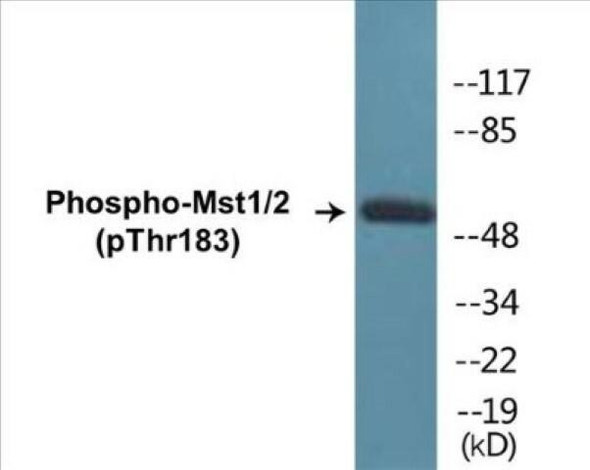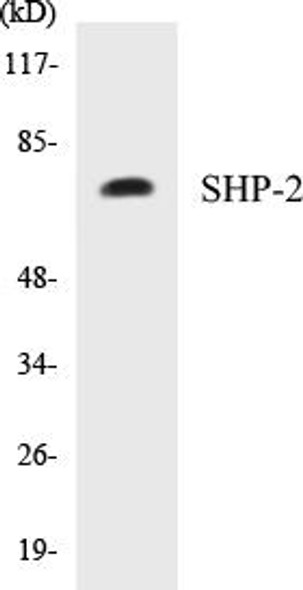Mst1/2 Colorimetric Cell-Based ELISA Kit
- SKU:
- CBCAB00771
- Product Type:
- ELISA Kit
- ELISA Type:
- Cell Based
- Research Area:
- Cell Death
- Reactivity:
- Human
- Mouse
- Detection Method:
- Colorimetric
Description
Mst1/2 Colorimetric Cell-Based ELISA Kit
The MST1/2 Colorimetric Cell-Based ELISA Kit is specifically designed for the quantitative measurement of MST1/2 levels in cell lysates and culture supernatants. This kit offers high sensitivity and specificity, allowing for accurate and reproducible results in various research applications.MST1/2, also known as mammalian sterile 20-like kinases 1 and 2, play important roles in regulating cell growth, apoptosis, and immune responses. Dysregulation of MST1/2 has been linked to various diseases, including cancer, autoimmune disorders, and neurodegenerative diseases.
Therefore, measuring MST1/2 levels can provide valuable insights into disease mechanisms and potential therapeutic targets.With the MST1/2 Colorimetric Cell-Based ELISA Kit, researchers can confidently study the involvement of MST1/2 in various cellular processes and diseases, advancing our understanding of their functions and potential clinical applications.
| Product Name: | Mst1/2 Colorimetric Cell-Based ELISA |
| Product Code: | CBCAB00771 |
| ELISA Type: | Cell-Based |
| Target: | Mst1/2 |
| Reactivity: | Human, Mouse |
| Dynamic Range: | > 5000 Cells |
| Detection Method: | Colorimetric 450 nmStorage/Stability:4°C/6 Months |
| Format: | 96-Well Microplate |
The Mst1/2 Colorimetric Cell-Based ELISA Kit is a convenient, lysate-free, high throughput and sensitive assay kit that can detect Mst1/2 protein expression profile in cells. The kit can be used for measuring the relative amounts of Mst1/2 in cultured cells as well as screening for the effects that various treatments, inhibitors (ie siRNA or chemicals), or activators have on Mst1/2.
Qualitative determination of Mst1/2 concentration is achieved by an indirect ELISA format. In essence, Mst1/2 is captured by Mst1/2-specific primary antibodies while the HRP-conjugated secondary antibodies bind the Fc region of the primary antibody. Through this binding, the HRP enzyme conjugated to the secondary antibody can catalyze a colorimetric reaction upon substrate addition. Due to the qualitative nature of the Cell-Based ELISA, multiple normalization methods are needed:
| 1. | A monoclonal antibody specific for human GAPDH is included to serve as an internal positive control in normalizing the target absorbance values. |
| 2. | Following the colorimetric measurement of HRP activity via substrate addition, the Crystal Violet whole-cell staining method may be used to determine cell density. After staining, the results can be analysed by normalizing the absorbance values to cell amounts, by which the plating difference can be adjusted. |
| Database Information: | Gene ID: 6788/6789, UniProt ID: Q13188/Q13043, OMIM: 605030/604965, Unigene: Hs.492333/Hs.472838 |
| Gene Symbol: | STK3/STK4 |
| Sub Type: | None |
| UniProt Protein Function: | MST2: a protein kinase of the STE20 family. Activated by apoptotic signals as well as other stress conditions. Full activation requires both phosphorylation and caspase-mediated cleavage. Following cleavage by caspase-3, undergoes irreversible autophosphorylation. Full-length is mainly unphosphorylated in the rat thymus and cultured cells, whereas caspase-3-cleaved MST2 in apoptotic cells is highly phosphorylated. |
| UniProt Protein Details: | Protein type:Protein kinase, STE; Protein kinase, Ser/Thr (non-receptor); Kinase, protein; Autophagy; EC 2.7.11.1; STE group; STE20 family; MST subfamily Chromosomal Location of Human Ortholog: 8q22.2 Cellular Component: cytoplasm; cytosol; nucleus Molecular Function:protein dimerization activity; protein serine/threonine kinase activity; protein serine/threonine kinase activator activity; protein binding; magnesium ion binding; ATP binding; receptor signaling protein serine/threonine kinase activity; protein kinase activity Biological Process: central nervous system development; positive regulation of protein binding; protein stabilization; positive regulation of apoptosis; apoptosis; positive regulation of JNK cascade; signal transduction; negative regulation of organ growth; protein amino acid phosphorylation; negative regulation of cell proliferation; positive regulation of protein kinase B signaling cascade; positive regulation of fat cell differentiation; positive regulation of transcription factor activity; neural tube formation |
| NCBI Summary: | This gene encodes a serine/threonine protein kinase activated by proapoptotic molecules indicating the encoded protein functions as a growth suppressor. Cleavage of the protein product by caspase removes the inhibitory C-terminal portion. The N-terminal portion is transported to the nucleus where it homodimerizes to form the active kinase which promotes the condensation of chromatin during apoptosis. Multiple transcript variants encoding different isoforms have been found for this gene. [provided by RefSeq, Jan 2012] |
| UniProt Code: | Q13188 |
| NCBI GenInfo Identifier: | 46577700 |
| NCBI Gene ID: | 6788 |
| NCBI Accession: | Q13188.2 |
| UniProt Secondary Accession: | Q13188,Q15445, Q15801, Q96FM6, A8K722, B3KYA7, |
| UniProt Related Accession: | Q13188 |
| Molecular Weight: | 491 |
| NCBI Full Name: | Serine/threonine-protein kinase 3 |
| NCBI Synonym Full Names: | serine/threonine kinase 3 |
| NCBI Official Symbol: | STK3 |
| NCBI Official Synonym Symbols: | KRS1; MST2 |
| NCBI Protein Information: | serine/threonine-protein kinase 3; MST-2; STE20-like kinase MST2; mammalian STE20-like protein kinase 2; serine/threonine-protein kinase Krs-1; serine/threonine kinase 3 (STE20 homolog, yeast); serine/threonine kinase 3 (Ste20, yeast homolog) |
| UniProt Protein Name: | Serine/threonine-protein kinase 3 |
| UniProt Synonym Protein Names: | Mammalian STE20-like protein kinase 2; MST-2; STE20-like kinase MST2; Serine/threonine-protein kinase Krs-1Cleaved into the following 2 chains:Serine/threonine-protein kinase 3 36kDa subunit; MST2/N; Serine/threonine-protein kinase 3 20kDa subunit; MST2/C |
| Protein Family: | Serine/threonine-protein kinase |
| UniProt Gene Name: | STK3 |
| UniProt Entry Name: | STK3_HUMAN |
| Component | Quantity |
| 96-Well Cell Culture Clear-Bottom Microplate | 2 plates |
| 10X TBS | 24 mL |
| Quenching Buffer | 24 mL |
| Blocking Buffer | 50 mL |
| 15X Wash Buffer | 50 mL |
| Primary Antibody Diluent | 12 mL |
| 100x Anti-Phospho Target Antibody | 60 µL |
| 100x Anti-Target Antibody | 60 µL |
| Anti-GAPDH Antibody | 60 µL |
| HRP-Conjugated Anti-Rabbit IgG Antibody | 12 mL |
| HRP-Conjugated Anti-Mouse IgG Antibody | 12 mL |
| SDS Solution | 12 mL |
| Stop Solution | 24 mL |
| Ready-to-Use Substrate | 12 mL |
| Crystal Violet Solution | 12 mL |
| Adhesive Plate Seals | 2 seals |
The following materials and/or equipment are NOT provided in this kit but are necessary to successfully conduct the experiment:
- Microplate reader able to measure absorbance at 450 nm and/or 595 nm for Crystal Violet Cell Staining (Optional)
- Micropipettes with capability of measuring volumes ranging from 1 µL to 1 ml
- 37% formaldehyde (Sigma Cat# F-8775) or formaldehyde from other sources
- Squirt bottle, manifold dispenser, multichannel pipette reservoir or automated microplate washer
- Graph paper or computer software capable of generating or displaying logarithmic functions
- Absorbent papers or vacuum aspirator
- Test tubes or microfuge tubes capable of storing ≥1 ml
- Poly-L-Lysine (Sigma Cat# P4832 for suspension cells)
- Orbital shaker (optional)
- Deionized or sterile water
*Note: Protocols are specific to each batch/lot. For the correct instructions please follow the protocol included in your kit.
| Step | Procedure |
| 1. | Seed 200 µL of 20,000 adherent cells in culture medium in each well of a 96-well plate. The plates included in the kit are sterile and treated for cell culture. For suspension cells and loosely attached cells, coat the plates with 100 µL of 10 µg/ml Poly-L-Lysine (not included) to each well of a 96-well plate for 30 minutes at 37°C prior to adding cells. |
| 2. | Incubate the cells for overnight at 37°C, 5% CO2. |
| 3. | Treat the cells as desired. |
| 4. | Remove the cell culture medium and rinse with 200 µL of 1x TBS, twice. |
| 5. | Fix the cells by incubating with 100 µL of Fixing Solution for 20 minutes at room temperature. The 4% formaldehyde is used for adherent cells and 8% formaldehyde is used for suspension cells and loosely attached cells. |
| 6. | Remove the Fixing Solution and wash the plate 3 times with 200 µL 1x Wash Buffer for five minutes each time with gentle shaking on the orbital shaker. The plate can be stored at 4°C for a week. |
| 7. | Add 100 µL of Quenching Buffer and incubate for 20 minutes at room temperature. |
| 8. | Wash the plate 3 times with 1x Wash Buffer for 5 minutes each time. |
| 9. | Add 200 µL of Blocking Buffer and incubate for 1 hour at room temperature. |
| 10. | Wash 3 times with 200 µL of 1x Wash Buffer for 5 minutes each time. |
| 11. | Add 50 µL of 1x primary antibodies (Anti-Mst1/2 Antibody and/or Anti-GAPDH Antibody) to the corresponding wells, cover with Parafilm and incubate for 16 hours (overnight) at 4°C. If the target expression is known to be high, incubate for 2 hours at room temperature. |
| 12. | Wash 3 times with 200 µL of 1x Wash Buffer for 5 minutes each time. |
| 13. | Add 50 µL of 1x secondary antibodies (HRP-Conjugated AntiRabbit IgG Antibody or HRP-Conjugated Anti-Mouse IgG Antibody) to corresponding wells and incubate for 1.5 hours at room temperature. |
| 14. | Wash 3 times with 200 µL of 1x Wash Buffer for 5 minutes each time. |
| 15. | Add 50 µL of Ready-to-Use Substrate to each well and incubate for 30 minutes at room temperature in the dark. |
| 16. | Add 50 µL of Stop Solution to each well and read OD at 450 nm immediately using the microplate reader. |
(Additional Crystal Violet staining may be performed if desired – details of this may be found in the kit technical manual.)










